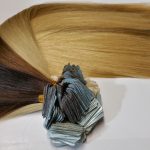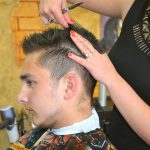Alopecia treatment – the relevant advice
What is alopecia?
Alopecia is a serious autoimmune disease during which our own body attacks our hair follicles and their cells. As a result, the hair follicles stop producing new hair cells, and therefore when our hair strands naturally fall out throughout the day, the follicles no longer replace the lost hair, as they would normally do. Consequently, we can then face serious hair thinning and hair loss problems. In cases of minor alopecia, our hair tends to only thin a little, and at times the effects aren’t even noticeable. However, there are also severe cases of the disease, during which hair loss can be quite substantial and bald patches clearly visible. In the most extreme cases we can even lose all hair and become completely bald, during a fairly short period of time.
Unfortunately, as with all types of autoimmune diseases, it’s very difficult and challenging to determine the exact causes of alopecia. Of course, some types of alopecia are more obvious and recognisable than others e.g. involutional alopecia, which is connected with the human aging process. If we suffer because of this involutional alopecia we start losing hair because the follicles enter the ‘resting phase’, in other words they do not continue the active cell production. Unfortunately, with other, less generic types of alopecia it can be actually very difficult to find their cause, and thus it complicates the treatment process as well. A good example of this is alopecia areata during which we can start losing hair and face negative impact of distinctive hair loss – but the main problem is often that the source of this disease is either unknown or unclear, and doctors may struggle to prescribe appropriate treatments. Alopecia areata may be a defect caused by: genetics, general health problems (other illnesses), stress, depression etc.
Alopecia treatment
Although alopecia is a serious problem (sometimes caused by unclear circumstances), it can thankfully be effectively cured. Alopecia treatment may vary according to many factors, for example: the type of alopecia, our age, general physical condition, our personality and general attitude to life. There are two main ways of treating alopecia. Firstly, you can go for medical procedures such as medications or surgical hair transplants. Secondly, you may choose non-invasive methods such as hair enhancements and extensions. Thirdly, there are always small chances that you’ll be able to recover from alopecia on our own – but this is usually the case if the condition of your alopecia is only minor, and even then, some remedies must be used. If you apply one of those treatments, and you notice that you’re quickly recovering (even after a couple of months), then there are huge chances of getting better, and even going back to your original state of being.
It’s best to keep in mind that non-surgical alopecia treatment can have great positive effects, both on our physical appearance and on our emotional state. Contemporary hair enhancement systems are very advanced and offer risk-free, long lasting solutions. For example, hair extensions can actually do wonders, making our hair look great again. So, combating the disease and restoring our self-esteem nowadays could be easier than ever. Alopecia treatment methods that use hair extensions from natural human hair guarantee the ultimate natural look and convenience, so many opt for this alternative. And the most exciting part is that the attachment methods are complex, but quick and pain-free, so you can enjoy the extensions with no additional stress. Thanks to treatments like those we can easily go back to our everyday routine and enjoy even the most challenging tasks such as sports and wild nights out! Such solution will certainly bring you satisfaction and long-term sense of fulfilment.
 Previous Post
Previous Post Next Post
Next Post



